Nolen’s stories reveal how the disease works, how it spreads, and how it kills; how it is inextricably tied to conflict, famine, failure of leadership, and the collapse of states, and to the cultures it has ravaged; how treatment works, and how people who can’t get it fight to stay alive with courage, dignity, and hope against huge odds. Writing with power, understanding, and simplicity, Stephanie Nolen makes us listen, allows us to understand, and inspires us to care. Timely, transformative, and thoroughly accessible, 28 is essential reading for our times.
28: Stories of AIDS in Africa
KShs 1,800.00
Nolen’s stories reveal how the disease works, how it spreads, and how it kills; how it is inextricably tied to conflict, famine, failure of leadership, and the collapse of states, and to the cultures it has ravaged; how treatment works, and how people who can’t get it fight to stay alive with courage, dignity, and hope against huge odds. Writing with power, understanding, and simplicity, Stephanie Nolen makes us listen, allows us to understand, and inspires us to care. Timely, transformative, and thoroughly accessible, 28 is essential reading for our times.
1 in stock
Related products
-
Study Guide for Understanding Pathophysiology
KShs 8,190.00Reinforce your understanding of difficult pathophysiology concepts! Corresponding to the chapters from Huether’s Understanding Pathophysiology, 7th Edition, this study guide provides a wide variety of activities and thousands of interactive questions to help you review and master pathophysiology content. This practical workbook guides readers through chapters on normal anatomy and physiology to chapters on body systems and disease. Case scenarios and practice exams help you develop the clinical thinking skills needed to succeed in clinical practice.
New to this edition- NEW! UPDATED content reflects the updates to the main text along with changes to the chapter structure.
Key Features- More than 30 case scenarios provide real-world examples of how pathophysiology is used in the clinical setting.
- More than 2,500 interactive, engaging activities and questions are provided in a variety of formats.
- Nearly 70 images from the textbook are used in Explain the Pictures and Draw Your Answers questions to better engage visual learners.
- Teach These People about Pathophysiology poses questions directly from the patient’s point of view.
- Corresponding chapters make it easy to go back and forth between the workbook and the Understanding Pathophysiology textbook.
- Answer key allows you to check answers and evaluate your progress.
Author InformationBy Sue E. Huether, MS, PhD, Professor Emerita, College of Nursing, University of Utah, Salt Lake City, Utah and Kathryn L. McCance, MS, PhD, Professor Emerita, College of Nursing, University of Utah, Salt Lake City, Utah -
Nelson Textbook of Pediatrics_vol 1
KShs 12,000.00The worlds most trusted pediatrics resource continues to provide the most authoritative coverage of the best approaches to care in this streamlined new edition. With two new editors, extensive updates, and expanded online features, youll have the well-rounded, up-to-date guidance you need to offer your patients the very best. ? Stay current on recent developments and hot topics such as melamine poisoning, long-term mechanical ventilation in the acutely ill child, sexual identity and adolescent homosexuality, age-specific behavior disturbances, and psychosis associated with epilepsy. ? Tap into substantially enhanced content with world-leading clinical and research expertise from two new editors Joseph W. St. Geme III, MD, and Nina F. Schor, MD, PhD who contribute on key subspecialties, including pediatric infectious disease and pediatric neurology. ? Manage the transition to adult healthcare for children with chronic diseases through discussions of the overall health needs of patients with congenital heart defects, diabetes, and cystic fibrosis. ? Recognize, diagnose, and manage genetic conditions more effectively using an expanded section that covers these diseases, disorders, and syndromes extensively.
-
Handbook of Health Research Methods: Investigation, Measurement and Analysis 1st Edition
KShs 7,278.00This handbook helps researchers to plan, carry out, and analyse health research, and evaluate the quality of research studies. The book takes a multidisciplinary approach to enable researchers from different disciplines to work side-by-side in the investigation of population health, the evaluation of health care, and in health care delivery.
Handbook of Health Research Methods is an essential tool for researchers and postgraduate students taking masters courses, or undertaking doctoral programmes, in health services evaluation, health sciences, health management, public health, nursing, sociology, socio-biology, medicine and epidemiology. However, the book also appeals to health professionals who wish to broaden their knowledge of research methods in order to make effective policy and practice decisions.
Contributors: Joy Adamson, Geraldine Barrett, Jane P. Biddulph, Ann Bowling, Sara Brookes, Jackie Brown, Simon Carter, Michel P. Coleman, Paul Cullinan, George Davey Smith, Paul Dieppe, Jenny Donovan, Craig Duncan, Shah Ebrahim, Vikki Entwistle, Clare Harries, Lesley Henderson, Kelvyn Jones, Olga Kostopoulou, Sarah J. Lewis, Richard Martin, Martin McKee, Graham Moon, Ellen Nolte, Alan O’Rourke, Ann Oakley, Tim Peters, Tina Ramkalawan, Caroline Sanders, Mary Shaw, Andrew Steptoe, Jonathan Sterne, Anne Stiggelbout, S.V. Subramanian, Kate Tilling, Liz Twigg, Suzanne Wait.
-
Pocket book of hospital care for children
KShs 3,640.00This is the second edition of the Pocket book of hospital care for children. It is for use by doctors, nurses and other health workers who are responsible for the care of young children at the first level referral hospitals. The Pocket Book is one of a series of documents and tools that support the Integrated Management of Childhood Illness (IMCI). It is an update of the 2005 edition, and presents up-to-date evidence based clinical guidelines from several recently updated and published WHO guidelines and recommendations. The guidelines are for use in both inpatient and outpatient care in hospitals with basic laboratory facilities and essential medicines. These guidelines focus on the management of the major causes of childhood mortality in most developing countries, such as newborn problems, pneumonia, diarrhoea, malaria, meningitis, septicaemia, measles and related conditions, severe acute malnutrition and paediatric HIV/AIDS. It also covers common procedures, patient monitoring and supportive care on the wards and some common surgical conditions that can be managed in small hospitals.
Details of the evidence on which the Pocket Book is based can be found on the WHO website from the relevant published guidelines provided in the bibliography. This bedside paediatric care guidelines are applicable in most areas of the world and may be adapted to suit country specific circumstances. However, advanced and high care treatment options, such as intensive care or mechanical ventilation, are not described. The Pocket Book is also available in hard copies although the online version will be updated regularly as new evidence emerges.
-
Workbook for Merrill’s Atlas of Radiographic Positioning and Procedures, 15th Edition
KShs 24,932.00Reinforce your understanding of radiographic positioning and procedures with this practical workbook! Corresponding to the content in Merrill’s Atlas of Radiographic Positioning & Procedures, 15th Edition, this workbook helps you review and practice essential radiographic terminology, anatomy, and positioning concepts. Exercises include multiple-choice and matching questions, imaging evaluation, and more. Written by the textbook’s authors, this workbook prepares you for success on the ARRT certification exam and in clinical radiography practice.
-
Netter Atlas of Human Anatomy: Classic Regional Approach, International Edition, 8th Edition
KShs 8,000.00For students and clinical professionals who are learning anatomy, participating in a dissection lab, sharing anatomy knowledge with patients, or refreshing their anatomy knowledge, the Netter Atlas of Human Anatomy illustrates the body, region by region, in clear, brilliant detail from a clinician’s perspective. Unique among anatomy atlases, it contains illustrations that emphasize anatomic relationships that are most important to the clinician in training and practice. Illustrated by clinicians, for clinicians, it contains more than 550 exquisite plates plus dozens of carefully selected radiologic images for common views.
Key Features-
- Presents world-renowned, superbly clear views of the human body from a clinical perspective, with paintings by Dr. Frank Netter as well as Dr. Carlos A. G. Machado, one of today’s foremost medical illustrators.
-
- Content guided by expert anatomists and educators: R. Shane Tubbs, Paul E. Neumann, Jennifer K. Brueckner-Collins, Martha Johnson Gdowski, Virginia T. Lyons, Peter J. Ward, Todd M. Hoagland, Brion Benninger, and an international Advisory Board.
-
- Offers region-by-region coverage, including muscle table appendices at the end of each section and quick reference notes on structures with high clinical significance in common clinical scenarios.
-
- Contains new illustrations by Dr. Machado including clinically important areas such as the pelvic cavity, temporal and infratemporal fossae, nasal turbinates, and more.
-
- Features new nerve tables devoted to the cranial nerves and the nerves of the cervical, brachial, and lumbosacral plexuses.
-
- Uses updated terminology based on the second edition of the international anatomic standard, Terminologia Anatomica, and includes common clinically used eponyms.
-
- Provides access to digital content: over 100 bonus plates including illustrations from previous editions and over 300 multiple choice questions.
Also available, alternative versions of the 8th Edition as main editions:
• Netter Atlas of Human Anatomy: A Systems Approach—Same content as the classic regional approach, but organized by organ systems.
• Netter Atlas of Human Anatomy: Classic Regional Approach with Latin terminology
All options contain the same table information and same 550+ illustrated plates painted by clinician artists, Frank H. Netter, MD, and Carlos Machado, MD.
Author InformationBy Frank H. Netter, MD -
-
Children with Developmental Disabilities: A Training Guide for Parents, Teachers and Caregivers First Edition
KShs 6,370.00This manual is designed as a guide for parents, teachers and caregivers dealing with children up to the age of six who are afflicted by developmental disabilities. The author provides details of more than 400 non-formal activities along with guidelines on how to use them both at home and in pre-school settings.
The book is divided into three sections:
– the first describes a wide range of impairments, disabilities and handicaps along with information on their manifestations and characteristics. The author also outlines steps to handle negative or problem behaviour during training.
– the next section presents a Comprehensive Activity Checklist for pre-school children. All items have been empirically tested and are located on a scale of increasing difficulty.
– the third section comprises two chapters. The first is a `do-it-yourself` activity assistance guide which will be of immense use to trainers, caregivers, teachers and parents. In the last chapter, Dr Venkatesan discusses contemporary problems and issues related to the rights and privileges of persons with developmental disabilities -
First Aid Manual 11th Edition
KShs 3,000.00About First Aid Manual 11th Edition
The UK’s only fully authorised first aid guide, this book is used as the official training manual for the UK’s leading first aid organisations’ courses.
This updated manual covers all aspects of first aid at work, home, and in the field. Using clear, up-to-date information, step-by-step photography, and simplified diagrams, anyone can be prepared for any medical emergency.
This essential manual was written and endorsed by all three of the UK’s leading first aid providers – St John Ambulance, St Andrew’s Ambulance Association, and British Red Cross. Inside, you will discover:
– Quick-reference emergency first aid section
– Learn every life-saving technique you need to know
– Clear anatomy and physiology sections help the reader understand treatment priorities
– Every condition clearly explained with causes, symptoms, and signs (how to recognise the condition), as well as step-by-step action plans
– Informative photography throughout shows the reader exactly what to do in any situation and new simple, accessible illustrations that clearly show vital information
– How to manage first aid in pandemic conditions, what to do in a terrorist incident as well as the latest guidelines on resuscitation, and delivering first aid for patients during a mental health crisisThe 11th edition of this essential first aid guide provides expert advice on how to treat a wide range of medical issues, including how to treat babies and children. First aiders will learn how to attend to over 100 different conditions from splinters, sprained ankles to unresponsive casualties, and how to use essential equipment.
Discover the best ways to manage a situation safely and how to assess sick and injured people effectively. This first aid book is set up with easy-to-understand anatomy sections that explain the risks involved with particular injuries or conditions. Discover every life-saving technique you need to know with step-by-step photography, all shot in-situ to reflect real-life situations. It also includes updated illustrations redrawn in the simplest, clearest style to focus on the vital information you need to know in a crisis.


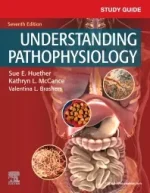
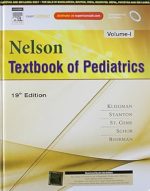
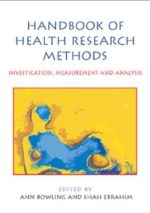
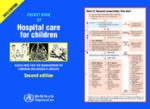
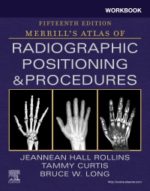
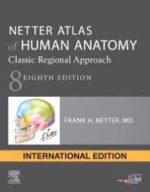
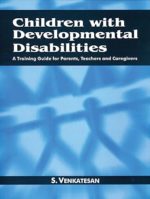
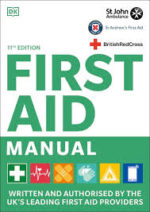
Be the first to review “28: Stories of AIDS in Africa”